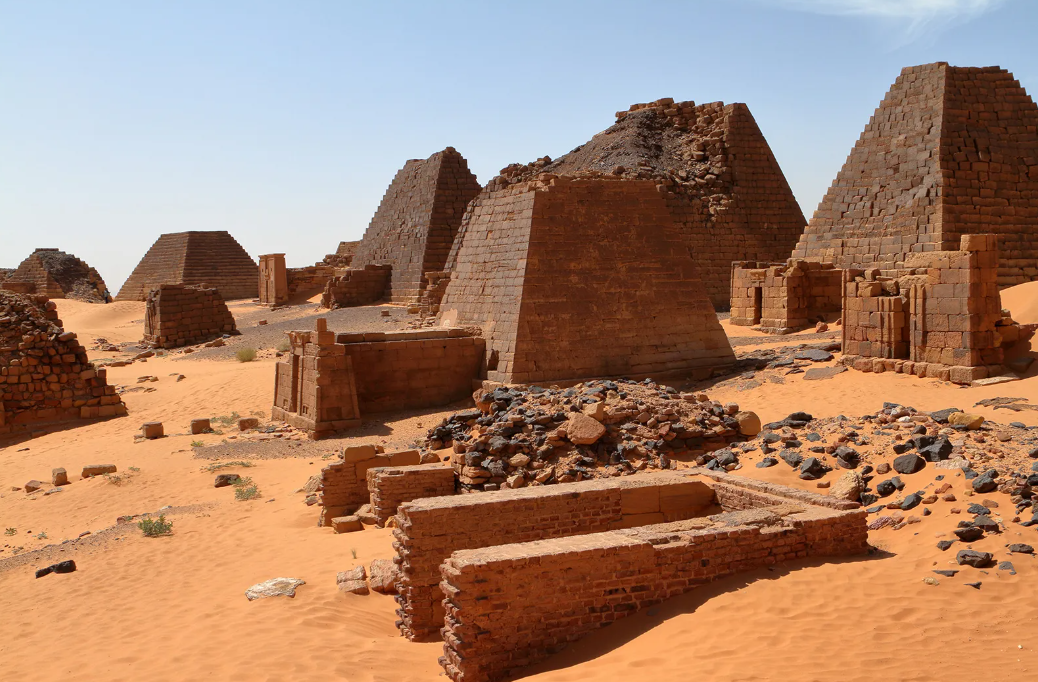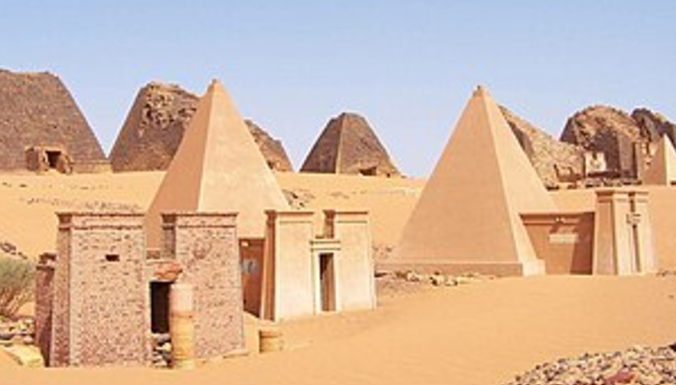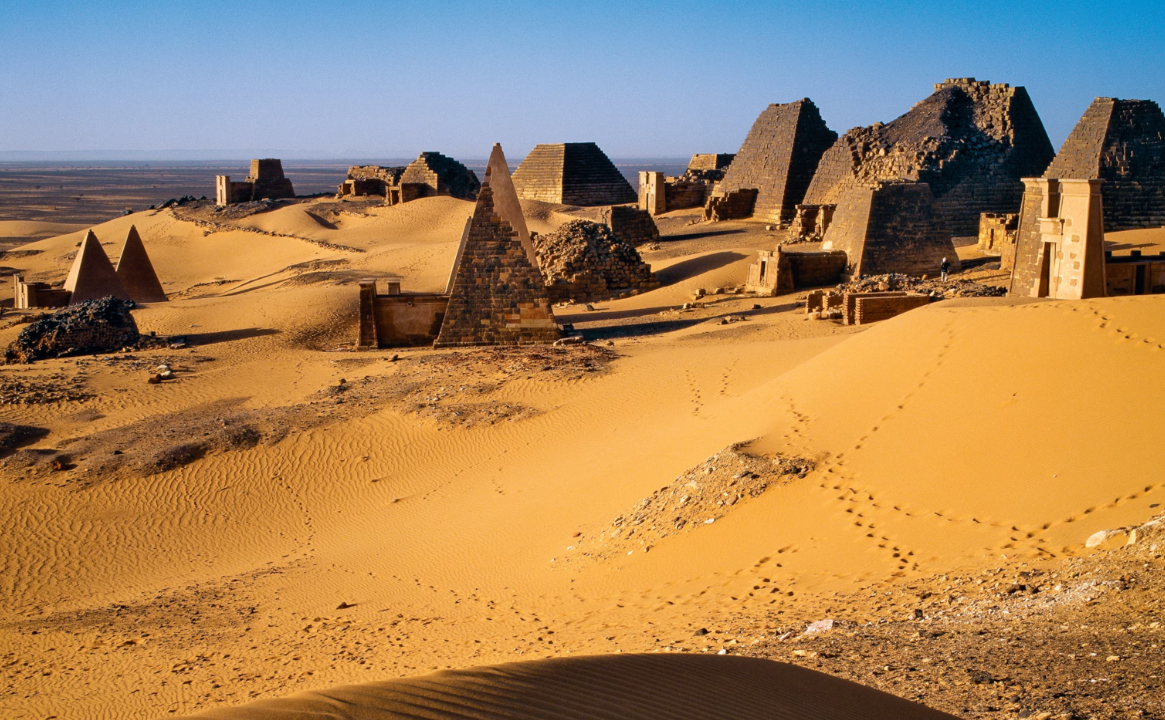The Kingdom of Kush, often referred to as Nubia, was a powerful and influential civilization that flourished in Northeast Africa. Known for its wealth, especially from its rich gold mines, Kush rivaled the might of the Assyrian Empire during the height of its power around 700 BC. This article archeology.dulichvn.net explores the fascinating history, culture, and contributions of this remarkable kingdom.
Origins and Rise of the Kingdom of Kush
Early Beginnings in Nubia
The Kingdom of Kush originated in the region of Nubia, located in modern-day Sudan and southern Egypt. The area’s abundant natural resources, particularly gold, earned Nubia its name and established the kingdom as a major center of wealth and trade.

The Kingdom of Kerma
Kush’s early phase, known as the Kerma Kingdom (c. 2500–1500 BC), marked the rise of Nubian power. Kerma became an influential city-state, known for its monumental architecture, intricate pottery, and vibrant trade networks that extended to Egypt and beyond.
Conquest by Egypt and the Napatan Revival
The New Kingdom of Egypt conquered Kush around 1500 BC, incorporating it into its empire. However, by 1070 BC, Egypt’s power waned, and Kush regained its independence. This period saw the rise of Napata, the first major capital of the Kingdom of Kush, signaling a resurgence of Nubian culture and influence.
See more: Fire Rainbows A Rare and Stunning Atmospheric Phenomenon
The Golden Age of Kush
Rivalry with the Assyrian Empire
By 700 BC, the Kingdom of Kush emerged as a dominant power, rivaling the Assyrian Empire. While Assyria ruled much of Mesopotamia, Kush controlled vast territories in Africa and exerted influence over Egypt. This rivalry defined the geopolitical landscape of the time, with both empires competing militarily, politically, and economically.

The Twenty-Fifth Dynasty of Egypt
One of Kush’s most notable achievements was the establishment of the Twenty-Fifth Dynasty of Egypt. Known as the “Black Pharaohs,” rulers like Piye, Shabaka, and Taharqa united Egypt and Kush under their reign, fostering a period of cultural and architectural renaissance.
Economic Prosperity and Trade
Kush’s wealth was built on its gold mines, agriculture, and control of trade routes. The kingdom traded commodities such as ivory, ebony, and incense with neighboring regions and Mediterranean powers, further cementing its economic significance.
Culture and Contributions of the Kingdom of Kush
Unique Architecture and Art
Kushite culture blended Nubian and Egyptian influences, resulting in unique architectural styles. The pyramids of Meroë, smaller but steeper than their Egyptian counterparts, are iconic symbols of Kushite craftsmanship. Kushite art often depicted gods, royalty, and daily life, showcasing the kingdom’s rich spiritual and cultural heritage.

Language and Writing
The Meroitic script, developed during the Meroitic Kingdom (c. 300 BC–350 AD), is one of Africa’s earliest written languages. Although its full meaning remains undeciphered, the script represents a significant milestone in African history.
Religious Practices
Kushite religion combined traditional Nubian beliefs with elements of Egyptian theology. Deities like Amun, Isis, and Osiris played prominent roles in Kushite spirituality. The rulers of Kush often portrayed themselves as chosen by the gods, reinforcing their divine authority.
See more: Hawaiis Elephant Rock Mokuhooniki’s Elephant-Like Rock Formations
Decline and Legacy of the Kingdom of Kush
The Rise of Aksum
The Kingdom of Kush faced challenges from external forces, including the rising Kingdom of Aksum (modern-day Ethiopia). By the 4th century AD, Aksumite invasions weakened Kush, leading to its eventual decline.

Preservation of Kushite Heritage
Despite its fall, the Kingdom of Kush left a lasting legacy. Its achievements in architecture, trade, and governance influenced subsequent African civilizations and contributed to the broader narrative of world history.
Recognition in Modern History
Kush’s role in history has often been overshadowed by other ancient civilizations, but ongoing archaeological discoveries and scholarly research are bringing its contributions to light. The story of Kush challenges traditional narratives and highlights the complexity and diversity of African history.
Conclusion
The Kingdom of Kush stands as a testament to the power, innovation, and resilience of ancient African civilizations. Its rise to prominence, cultural achievements, and enduring legacy underscore its significance in the annals of history.
Through its golden age as a rival to the Assyrian Empire and its influence on Egypt, Kush demonstrated the richness of Nubian culture and its pivotal role in shaping early human civilization. As modern research continues to uncover the mysteries of this remarkable kingdom, Kush’s story reminds us of the deep and interconnected roots of global history.

CÁC TIN KHÁC
Mark Twain & Olivia Langdon: A 36-Year Love Story Filled with Laughter and Devotion
The Tollund Man: A 2,400-Year-Old Mystery Preserved in a Danish Bog
Skara Brae: Scotland’s Hidden Neolithic Village
Porta Nigra: The Hidden Depths of Trier’s Iconic Roman Gate